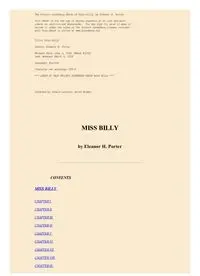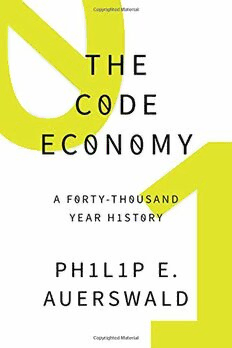
The code economy : a forty-thousand-year history PDF
Preview The code economy : a forty-thousand-year history
i THE CODE ECONOMY Q ii ii ii THE CODE ECONOMY Q A FORTY-T HOUSAND-Y EAR HISTORY PHILIP E. AUERSWALD 1 iv 1 Oxford University Press is a department of the University of Oxford. It furthers the University’s objective of excellence in research, scholarship, and education by publishing worldwide. Oxford is a registered trade mark of Oxford University Press in the UK and certain other countries. Published in the United States of America by Oxford University Press 198 Madison Avenue, New York, NY 10016, United States of America. © Oxford University Press 2017 All rights reserved. No part of this publication may be reproduced, stored in a retrieval system, or transmitted, in any form or by any means, without the prior permission in writing of Oxford University Press, or as expressly permitted by law, by license, or under terms agreed with the appropriate reproduction rights organization. Inquiries concerning reproduction outside the scope of the above should be sent to the Rights Department, Oxford University Press, at the address above. You must not circulate this work in any other form and you must impose this same condition on any acquirer. Library of Congress Cataloging-i n- Publication Data Names: Auerswald, Philip E., author. Title: The code economy : a forty-thousand-year history / Philip E. Auerswald. Description: New York, NY : Oxford University Press, [2017] Identifiers: LCCN 2016017260 | ISBN 9780190226763 (hardcover) | ISBN 9780190226787 (epub) Subjects: LCSH: Information technology—Economic aspects. | Economics. Classification: LCC HC79.I55 A896 2017 | DDC 303.48/3309—dc23 LC record available at https://lccn.loc.gov/2016017260 1 3 5 7 9 8 6 4 2 Printed by Edwards Brothers Malloy, United States of America v Q contents Introduction: Technology = Recipes 1 Part one: the advance of c ode 1. Jobs: Divide and Coordinate 13 2. Code: “This Is the Procedure” 25 3. Machines: “The Universal Character” 36 4. Computers: Predicting the Weather 50 Part two: code economics 5. Substitution: The Great Man- vs- Machine Debate 65 6. Information: “Reliable Circuits Using Crummy Relays” 87 7. Learning: The Dividend of Doing 99 8. Evolution: The Code of Life 115 9. Platforms: The Role of Standards in Enabling Increased Complexity 129 v vi vi vi Contents Part three: the human advantage 10. Complementarity: The Bifurcation Is Near 151 11. Education: The Game of Life 168 12. Equity: Progress and Poverty 180 13. Authenticity: Creating the Foundation for Reputation 202 14. Purpose: The Promised Sand 216 Conclusion: Identity: A Copernican Moment 235 Acknowledgments 239 Notes 243 References 271 Index 283 vi Q introduction Technology = Recipes The ingredients for bread were always the same: flour, yeast, water, and salt. But the difficulty was that there were ten thousand ways of combining these simple elements. Every little detail was important, we learned: the freshness of the yeast, the type of flour, the time of rising, the way one kneaded the dough, the amount of heat and moisture in the oven, even the weather. — Julia Child, My Life in France, 2006 the code economy describes the evolution of human productive activity from simplicity to complexity over the span of more than 40,000 years. I call this evolutionary process the advance of code. Our modern conception of code—p rograms run on digital computers— is just the latest incarnation; code is in fact much older. How, one might ask, have we humans managed to get where we are today despite our abundant failings, including wars, famines, and a demonstrably meager capacity for society- wide planning and coordina- tion? We have survived, and thrived, by developing productive activities that evolve into regular routines and standardized platforms— which is to say we have survived, and thrived, by creating and advancing code. How is this process evolutionary? In the economy, raw materials are like diatoms, amoebas, or plankton in the biological food chain, whereas standardized platforms are like complex multicellular organ- isms. As code advances, higher- level technologies feed on more funda- mental technologies in much the same way more complex organisms 1 2 2 The Code Economy feed on simpler organisms in the food chain. Platforms provide essen- tial structures for the code economy: The infrastructure that underlies a city is a standardized platform. Written language is a standardized platform. The Internet is a standardized platform. Human civilization has thus advanced through the creation and im- provement of code, which is built on layers of platforms that accumu- late like the pipes and tunnels that lie below a great city. The microeconomics you learned in college was generally limited to the “what” of production: what goes in and what comes out. This book is about the “how”: how inputs are combined to yield outputs. In other words, it is about how ideas become things. Here’s an example. You are baking chocolate chip cookies. You have arrayed before you the required ingredients: 1 cup of butter, 1 cup of white sugar, 1 cup of brown sugar, 2 eggs, 1 teaspoon of baking soda, 2 teaspoons of hot water, 1/ 2 teaspoon of salt, and (importantly) 2 cups of chocolate chips. These items, 30 minutes of your own labor, and access to the oven, bowls, and other durable equipment you employ constitute the inputs into your production process. The work will yield 24 servings of two cookies each, which constitute your output. From the perspective of standard microeconomic theory, we have fully described the production of chocolate chip cookies: capital, labor, and raw material inputs combine to yield an output. However, as is obvious to even the least experienced baker, simply listing ingre- dients and stating the output does not constitute a complete recipe. Something important is missing: the directions— how you make the cookies. The “how” goes by many names: recipes, processes, routines, algo- rithms, and programs, among others. While I will employ each of these names at different points in this book, I use the word “code” through- out to refer to the how of production. The essential idea is that the “what” of output cannot exist without the “how” by which it is produced. In other words, production is not possible without process. These processes evolve according to both their own logic and the path of human decision-m aking. This has always been true: the economy has always been at least as much about the 3 Introduction 3 evolution of code as about the choice of inputs and the consumption of output. Code economics is as old as the first recipe and the earliest systematically produced tool, and it is as integral to the unfolding of human history as every king, queen, general, prime minister, and pres- ident combined. We cannot understand the dynamics of the economy— its past or its future— without understanding code. The word “code” derives from the Latin codex, meaning “a system of laws.” Today code is used in various distinct contexts— computer code, genetic code, cryptologic code (i.e., ciphers such as Morse code), eth- ical code, building code, and so forth— each of which has a common feature: it contains instructions that require a process in order to reach its intended end. Computer code requires the action of a compiler, energy, and (usually) inputs in order to become a useful program. Genetic code requires expression through the selective action of en- zymes to produce proteins or RNA, ultimately producing a unique phenotype. Cryptologic code requires decryption in order to be con- verted into a usable message. Ethical codes, legal codes, and building codes all require processes of interpretation in order to be converted into action. Code can include instructions we follow consciously and purposively, and those we follow unconsciously and intuitively. Code can be under- stood tacitly, it can be written, or it can be embedded in hardware.1 Code can be stored, transmitted, received, and modified. Code captures the algorithmic nature of instructions as well as their evolutionary character. As you read this book, you will see that code as I intend it incorpo- rates elements of computer code, genetic code, cryptologic code, and other forms as well. But you will also see that it stands alone as its own concept— the instructions and algorithms that guide production in the economy—f or which no adequate word yet exists. To convey the intuitive meaning of the concept I intend to com- municate with the word “code,” as well as its breadth, I use two spe- cific and carefully selected words interchangeably with code: recipe and technology. My motivation for using “recipe” is evident from the chocolate chip cookie example I gave above. However, I do not intend the culinary
The list of books you might like

Believe Me

Haunting Adeline

The Spanish Love Deception

Do Epic Shit
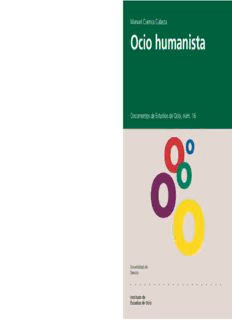
Ocio humanista: dimensiones y manifestaciones actuales del ocio
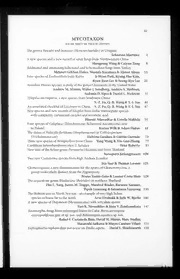
Mycotaxon 2006: Vol 96 Table of Contents

Il cinema americano contemporaneo

Unambiguous pure state identification without classical knowledge
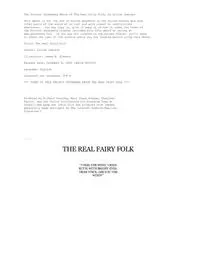
The Real Fairy Folk by Louise Jamison

ultimate traffic Live User Guide
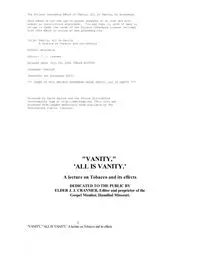
Vanity All is Vanity by J J Cranmer
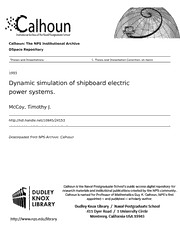
Dynamic simulation of shipboard electric power systems.

Como una novela
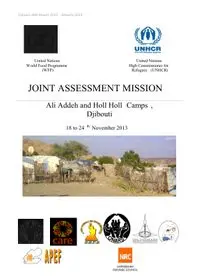
joint assessment mission
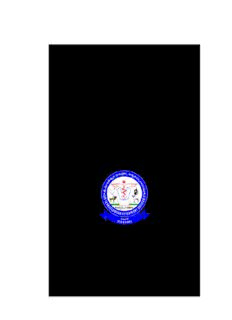
By P. VISHAL KUMAR BVSc. & AH Thesis Submitte
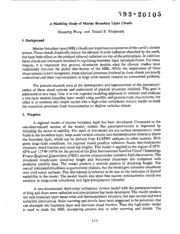
NASA Technical Reports Server (NTRS) 19930010916: A modeling study of marine boundary layer clouds
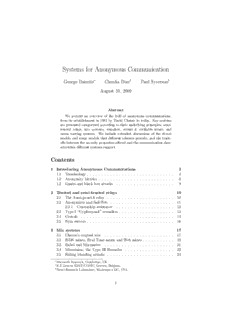
Systems for Anonymous Communication - COSIC
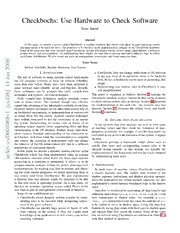
Checkbochs: Use Hardware to Check Software
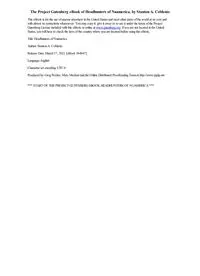
Headhunters of Nuamerica by Stanton A Coblentz
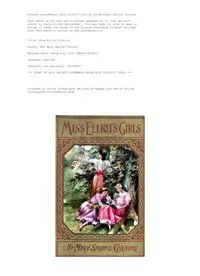
Miss Elliots Girls by Mrs Mary Spring Corning
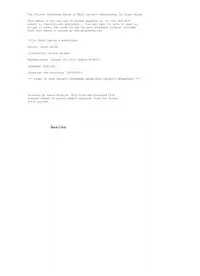
Miss Cayleys Adventures by Grant Allen
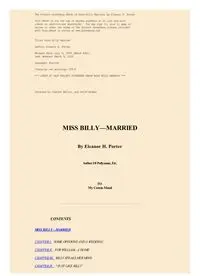
Miss BillyMarried by Eleanor H Porter
